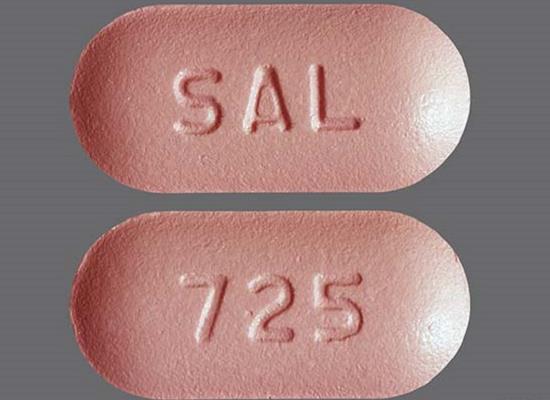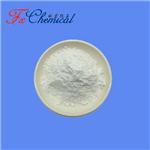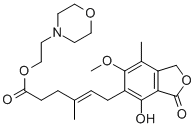Mycophenolate mofetil: pharmacokinetics, mechanism of action and applications in dermatology
General Description
Mycophenolate mofetil is an immunosuppressive medication that is rapidly converted to its active form, mycophenolic acid. MPA selectively inhibits inosine monophosphate dehydrogenase on lymphocytes, leading to the depletion of guanosine nucleotides and inhibition of T and B cell proliferation. It also suppresses leukocyte recruitment by decreasing adhesion to endothelial cells. Mycophenolate mofetil has been used off-label in dermatology, showing promise in treating inflammatory skin diseases. It spares the use of steroids and has a relatively safe profile compared to other medications. It is particularly beneficial for individuals who cannot tolerate other therapies or have refractory conditions. However, further research is needed to establish its efficacy and safety in dermatologic applications.

Figure 1. Tablet of mycophenolate mofetil
Pharmacokinetics
Mycophenolate mofetil is a medication used for immunosuppression. After oral or parenteral administration, Mycophenolate mofetil is quickly and completely converted to its active compound, mycophenolic acid (MPA), by plasma esterases. In healthy adults, the oral bioavailability of MPA is 94% compared to intravenous infusion. The volume of distribution of Mycophenolate mofetil is 3.6 L/kg after parenteral administration and 4.0 L/kg after oral administration. Approximately 97% of MPA in circulation binds to plasma albumin. Hemodialysis does not significantly remove MPA from the patient's system. MPA is primarily metabolized in the liver by glucuronidation, forming the inactive metabolite phenolic glucuronide of MPA (MPAG). MPAG also binds to plasma albumin (82%). Circulating MPAG can be converted back to active MPA through enterohepatic recirculation. Less than 1% of the administered Mycophenolate mofetil dose is excreted as MPA, while the majority (87%) is excreted as MPAG in the urine. Therefore, patients with renal insufficiency may have elevated levels of both active and inactive Mycophenolate mofetil metabolites. The remaining inactive metabolites are eliminated through feces. 1
Mechanism of action
Mycophenolate mofetil is an immunosuppressive agent with lymphocyte selectivity. Its active metabolite, mycophenolic acid (MPA), inhibits de novo purine synthesis by selectively and reversibly inhibiting inosine monophosphate dehydrogenase (IMPDH), primarily the type II isoform located on lymphocytes. IMPDH is necessary for purine synthesis, and Mycophenolate mofetil's action leads to depletion of guanosine nucleotides. T and B cell proliferation are almost exclusively dependent on de novo purine synthesis, explaining Mycophenolate mofetil's selectivity for lymphocytes and antibody formation. Additionally, Mycophenolate mofetil suppresses leukocyte recruitment to areas of inflammation by decreasing lymphocyte and monocyte adhesion to endothelial cells. This occurs through blocking glycosylation of glycoproteins required for adhesion. Compared to azathioprine, which interferes with similar steps in purine synthesis but is less selective, Mycophenolate mofetil has fewer and less extensive side effects. Azathioprine can also be toxic in TPMT-deficient individuals due to its metabolites' mutagenic potential, which does not occur with Mycophenolate mofetil. 2
Applications in dermatology
Mycophenolate mofetil is an immunosuppressive agent commonly used in transplant medicine. However, it has also shown therapeutic effects in treating inflammatory skin diseases, although its use in dermatology is currently off-label due to the lack of large randomized clinical trials. Nevertheless, there is growing evidence supporting the usefulness of Mycophenolate mofetil in various dermatologic conditions. One of the main advantages of Mycophenolate mofetil in dermatology is its ability to spare the use of steroids, which helps to avoid or reduce the unwanted side effects associated with long-term steroid use. Additionally, Mycophenolate mofetil is relatively safe and has a low toxicity profile compared to other medications. Mycophenolate mofetil plays a significant role in two patient populations. Firstly, it is a treatment option for individuals who cannot tolerate other medications due to concurrent diseases, enzymatic deficiencies, or intolerable side effects. Secondly, Mycophenolate mofetil is used to treat severe and refractory inflammatory skin diseases that have not responded adequately to other therapies. In these cases, Mycophenolate mofetil is typically used as monotherapy or as an adjunct to other treatments, with daily doses ranging from 1 to 2 grams and a maximum dose of 3 grams. In conclusion, while Mycophenolate mofetil use in dermatology is currently off-label, it has shown promise in the treatment of various inflammatory skin conditions. Further research and clinical trials are needed to establish its efficacy and safety in these specific dermatologic applications. 3
Reference
1. PDR Electronic Library. Mycophenolate mofetil (CellCept) product information [CD-ROM]. Nutley, NJ: Roche Laboratories; 1995.
2. Mydlarski PR. Mycophenolate mofetil: a dermatologic perspective. Skin Therapy Lett. 2005;10:1-6.
3. Orvis AK, Wesson SK, Breza TS Jr, Church AA, Mitchell CL, Watkins SW. Mycophenolate mofetil in dermatology. J Am Acad Dermatol. 2009;60(2):183-202.
You may like
Related articles And Qustion
See also
Lastest Price from Mycophenolate mofetil manufacturers

US $0.00/Kg/Drum2025-04-21
- CAS:
- 115007-34-6
- Min. Order:
- 1KG
- Purity:
- 98%min
- Supply Ability:
- 500kgs

US $50.00/kg2025-03-07
- CAS:
- 115007-34-6
- Min. Order:
- 1kg
- Purity:
- 0.99
- Supply Ability:
- 20t



